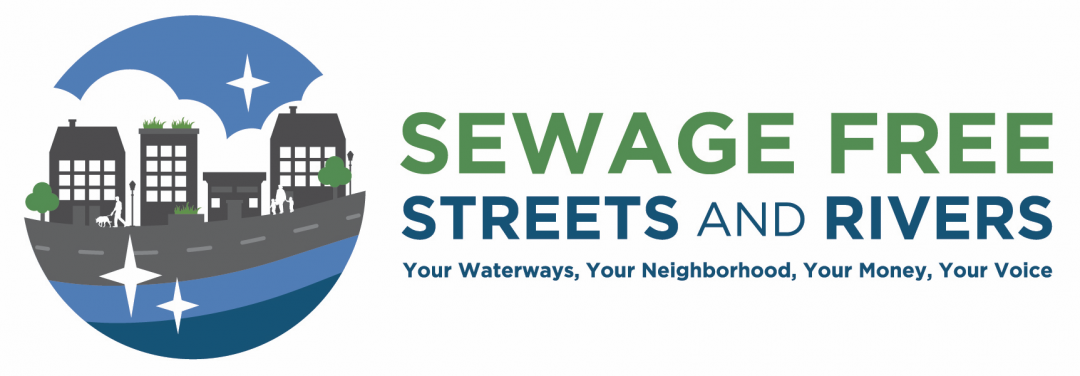The draft combined sewer overflow (CSO) Long Term Control Plans (LTCPs) that detail proposed solutions to reduce flooding and waterway pollution will be posted on the New Jersey Department of Environmental Protection (NJDEP) website after October 1. To date, there are two plans that have already been posted—one each for North Hudson Sewerage Authority’s River Road treatment plant and Adams Street treatment plant.
Community members should review plans that impact their communities to ensure that the proposed solutions maximize benefits and submit comments to the NJDEP as soon as possible. NJDEP will review comments through January 31, 2021. This example review provides an idea of what to look for when reading the LTCPs.
What to Look For
The documents that will be released may contain 1,000+ pages, but only the first 40 or so pages will contain relevant information for the review. The first section is called the “Selection and Implementation of Alternatives” and, in the case of the North Hudson Sewerage Authority plans linked above, it is contained in the first 35-40 pages. This section will contain most of the relevant information as it is the most recent addition since the Development and Evaluation of Alternatives Reports (DEARs) were published in July 2019. The remaining pages of the report are appendices that will likely include the system characterization, the DEAR, and details on the public participation process and financial capabilities assessment.
Assuming the LTCPs follow the same format as the North Hudson Sewerage Authority plans, you can expect to see the following sections that will be useful to review:
- Executive Summary: This will include the selected approach (presumptive vs. demonstrative) and a table of the implementation schedule for the projects selected.
- Methodology: This may also include the selected approach and details on existing percent capture in a typical year.
- Selected Alternatives: This will include technical details about the projects selected and details on expected percent capture after LTCP implementation.
- Public Participation: This will include details on the type of public outreach and number of meetings held, as well as public input that was considered for the project selection.
- Implementation Schedule: This will include the table of the projects selected, with expected construction cost and start dates; it may also include the financial capability assessment.
Using the Review Tool
When reviewing the plans, you can use this Google Form that was created to help guide you through the process and direct you to certain elements of the plan. Alternatively, you can download a word document of the questions. Following the first page of preliminary information, there are eight sections that contain 3-12 questions each:
- Executive Summary
- Presumptive vs. Demonstrative Approach
- Projects Selected
- Balance of Green and Gray Infrastructure
- Financing Considerations
- Public Participation
- Additional Questions to Consider
- Other Notes/Comments
Questions include multiple choice, checkboxes, and open-ended.
Tip: When reviewing the plan, it is best to have the Table of Contents section readily available. For example, if viewing the PDF in Preview on a Mac, select View > Table of Contents to have a pane show up with a clickable table of contents. If viewing the PDF in Google Chrome, the top-right “Bookmarks” icon will reveal a clickable table of contents. This will allow you to easily find and maneuver to particular sections without having to scroll.
The form collects email addresses for two reasons: 1) this will allow you to save your progress and return to the form at a later time; and 2) when you submit the form, you will receive an email containing your responses, which you can save as a PDF if needed. Please note that your email address will not be collected for any purpose other than these two reasons. At the end of each section, except for the first and last, you will see this question: “Do you want to save your results and quit for now?” If you choose “Yes,” you will be asked to submit the form. After you submit, you will receive an email with a link to edit your response. Alternatively, you will see a link to “Edit my response” right after you submit, and you can save or bookmark that link if needed. If you choose “No,” you will be able to move on to the next section.
Most sections of the Google form will feature a final, open-ended question that allows you to record your comments, concerns, and questions. Ideally, your answers to these questions will comprise the comments that you ultimately submit to NJDEP. The very last section of the Google form, “Other Notes/Comments,” features a single open-ended question for you to add any additional thoughts you wish to include, beyond the topics that were covered in the form.
Submitting Your Comments
Once you have formulated your comments, please submit them in a single email to these three contacts:
- The appropriate NJDEP contact, which you can find in the table below or on NJDEP’s website
- Cc: Susan Rosenwinkel (Susan.Rosenwinkel@dep.nj.gov), bureau chief of surface water permitting at NJDEP
Cc: The appropriate permittee contact, which you can find in the permittee directory


